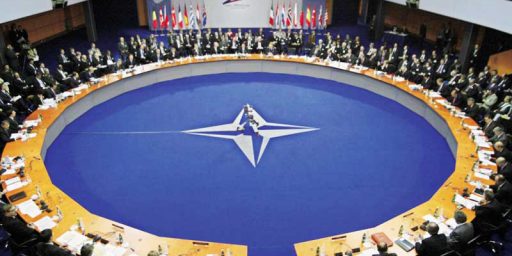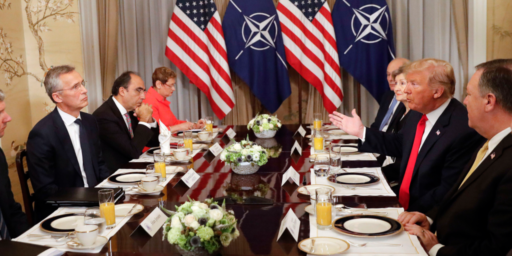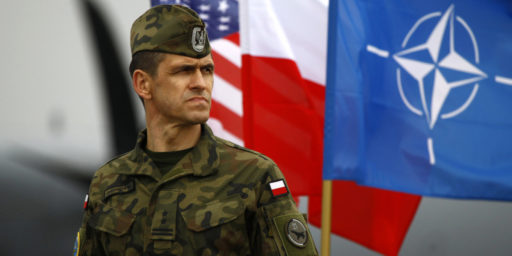Changing NATO
DefenseLINK Change Only Constant in European Command, General Says
Not only is the alliance expanding, but it is also seeking new capabilities — many tied to U.S. capabilities. “A transformed NATO, with greater agility, capability, and a new vision for engagement outside its traditional area, will be an essential and more capable partner for the United States,” he said. “We should welcome and fully support this historic change in the alliance.”
Jones said the command must become more agile, lethal and responsive to face the threats of the 21st century. “(European Command) is ideally positioned to engage, disrupt, dismantle and prevent terrorists from using their lines of communication and methods of resourcing which are critical to their ability to both operate and sustain themselves,” he said.
European Command’s Strategic Theater Transformation Plan — part of DoD’s Global Posture Review — will permit the command “to transform itself in such a way as to be better able to meet the diverse challenges of this new century,” Jones said.
At its base, the plan calls for a fundamental realignment of basing concepts, access and force capabilities. The changes in both NATO and the command are needed and are mutually supporting, Jones said. “By its leadership and example, (European Command) supports both the alliance in its transformation as well as NATO member nations undergoing their own internal transformation.”
***
In his testimony, Jones said the command will continue studies to reduce and realign “legacy” infrastructure in Europe. Many bases are leftovers of the Cold War, well suited for defending Western Europe, but for little else. Jones said the command also reassessed “the manner in which our forces are deployed and assigned to this theater from the United States.”
This last included reorienting U.S. forces toward the southeast and south to more suitably reflect the command’s expanding strategic responsibilities. “In addition to being joint, agile, sustainable and highly mobile, future forces operating in our region will be a combination of both permanently based and rotational units,” he said.
The command is also looking at concepts that capitalize on innovation to maintain old capabilities and create new ones. “Simply put, the traditional military principle of ‘mass’ no longer equates to commitment or capability,” the general said. “We will continue to re-tailor our forces based on an expeditionary model much better suited to meet the demands of the 21st century.”
Transformation is indeed a slow process. On the one hand, it was inconceivable in 1990 that we’d be doing any of this. That NATO has outlasted the Soviet Union by twelve years and, indeed, has absorbed much of the Warsaw Pact into its alliance is mindboggling. Still, it’s well past time to realign forces with reality.





